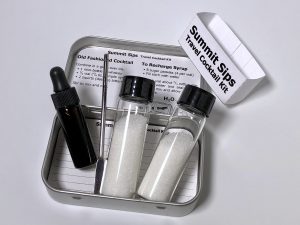
Homemade Cranberry Liqueur, Part 2
If you are seeing this for the first time, be sure to check out Part 1 for the first half of the story.

With that out of the way, we want to repeat that this was an experiment. Why are we saying this again? Well, it’s because our final liqueur ended up a little different than we expected. So, without further ado, here’s the rest of the story:
Strain, Filter and Repeat
Whether we are making a liqueur such as our limoncello, doing a vodka infusion, or experimenting with some other unusual homemade concoction, we find that investing a little more effort in the filtration pays dividends in the quality and often clarity of the final product. The cranberry liqueur was no exception. Continuing where we left off, the next step in this process was opening the infusion jar and pouring the liquid through a fine mesh strainer. We needed to do this in sections because our strainer is not very big. After pouring most of the liquid through and about half of the berry chunks, we began pressing the pieces with the back of a spoon to squeeze any remaining juice from them. We then transferred the chunks to a plate lined with cheesecloth. Finally, the remaining pieces of cranberries were poured into the strainer and so we could rinse out the jar.
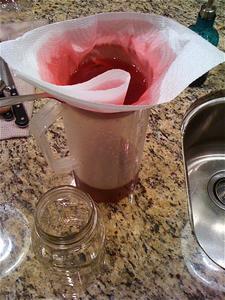
This left us with a nice portion of high-alcohol cranberry extract and a pile of berry chunks on cheesecloth. After rolling the cheesecloth into a sort of burrito, we were able to twist and squeeze every last drop of extract from them. This is an important step because the strongest flavors are likely right next to the fruit, if not locked up inside. Having discarded the fruit, we were left with a deep red extract. What looked a lot like fresh squeezed cranberry juice was deceptively high in alcohol and still contained a lot of tiny fruit particles.

If you have read a few of our other recipes, this should be pretty familiar, because the next steps involve finer filtration. The fine mesh strainer is a good start, but we like to filter everything we make like this through a coffee filter. However, if we jump directly to the coffee filter now, it will take hours to drain through. That’s because the larger particles tend to clog a fine filter very quickly and stop the flow. The solution is simple: paper towels. By starting the filtration using a paper towel, we are getting most of the big stuff out. We usually pass the extract through paper towels twice, discarding the paper with each pass. By the time we are ready to use a coffee filter, most of the particles have been removed and the liquid drains through very quickly. This leaves us with a very clear extract.
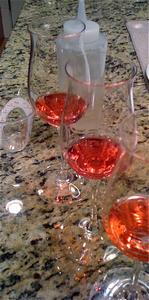 Testing, 1, 2, 3
Testing, 1, 2, 3
The final step involves cutting the alcohol to a reasonable level with water and adding sugar to sweeten the liqueur. We can accomplish both by using a simple syrup which is nothing more than sugar dissolved in water. The big question is how much? This is where the experiment took a turn toward the unexpected. We had originally thought we would need to cut the alcohol by about a factor of four, and based on other recipes, do so with a 1:1 simple syrup. In other words, we would mix equal portions of sugar and water, then mix this syrup with my extract at a ratio of about 4:1. Since we always have simple syrup around for cocktails (and you should too) this was easy to test. It started by measuring 1/4 ounce of extract and adding 1 ounce of my simple syrup. The result was disappointing. Not only did this taste far too sweet—it lost almost every indication of cranberry flavor. We quickly realized that while we had originally added 2 cups of alcohol to the berries, we had squeezed even more extract from them! This was diluting the mixture too much.
We followed with a series of tests, each with a different ratio of extract to syrup. What surprised us was that in order to maintain a cranberry flavor, we did not need to add nearly as much sugar as expected. The allspice and lemon peel were hardly noticeable which is probably okay, but the bitterness of the cranberries was only apparent at higher concentrations of alcohol. In other words, an ideal combination put the extract at half strength, with the other half being a half strength simple syrup! Your milage may vary, and had we used a lower proof spirit like vodka, we might have needed to use double strength syrup. In any case, you need to taste your results and do a few basic tests like we did. Mixing up a strong 2:1 syrup with 2 parts sugar and 1 part water makes it easy to build a series of tests using the same amount of extract and varying the amount of water and syrup. After careful measurements, you can zero in on what you like best. At long last, here’s our final recipe:
Experimental Cranberry Liqueur
12 oz fresh cranberries
6 allspice berries (cracked)
1/3 lemon peel
2 cups 190 proof neutral grain spirits (Everclear)
2 cups 1:2 simple syrup (1 part sugar to 2 parts water)Chop cranberries with a food processor and add them to a sealable jar. Drop in crushed allspice berries and lemon peel. Pour in neutral spirits and seal jar. Keep in a cool dark location for as long as you can stand waiting (a week) and agitate the contents every day. Open the jar and strain the dark red extract using cheesecloth to squeeze the cranberries. Discard the solids and filter the extract to remove fine particles using paper towels and a coffee filter. Measure extract and combine with an equal portion of 1/2 strength simple syrup (1 part sugar to 2 parts water). Pour liqueur into a bottle and enjoy your hard work! Note: do your own taste tests to determine your preference for sweetness before mixing or adding the syrup.
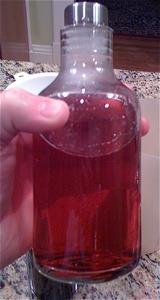
Next time we might add (dare we say it) more allspice. We were expecting this flavor to come out a long stronger. Also, even though we are not a big fan of cranberries, we found that less dilution let more bitter and alcohol flavor through and this gave me more of that cranberry taste we are used to. In the end, there is a lot less sugar than we expected, but that’s not necessarily a bad thing. These days, too many drinks disguise bitter with sweet and end up losing subtle flavors. Besides, we can always add syrup to a cocktail—it can’t be taken away.
It might also be worth it to experiment with other spirits. A rum version should work nicely. We even considered making my syrup with brown sugar. That would change things somewhat, but with nothing to compare it to, we feel compelled to track down some Boggs Cranberry Liqueur or some other brand if one is out there and see what a commercial version tastes like. Over the next few weeks, we will mix up some cocktails with this stuff and share those recipes with you. In the mean time, give this a shot while the cranberries are available. You have a few weeks to get started, and if nothing else, you can use it to make Cosmopolitans!
From The Shop:
Recommended:
You Might Also Like:
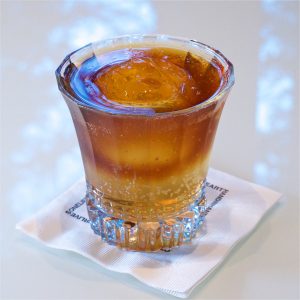
Cold Brew & Tonic
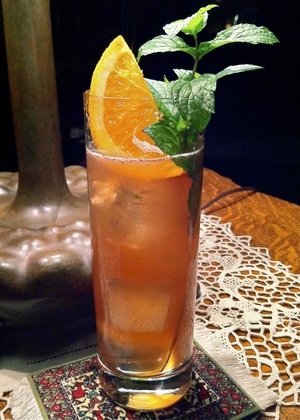
Singapore Sling
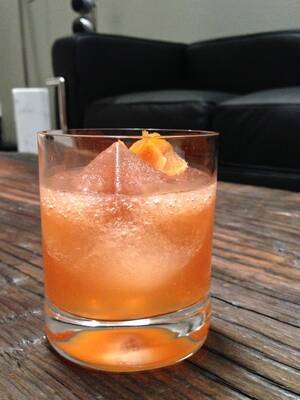
Church

Grounded For Life
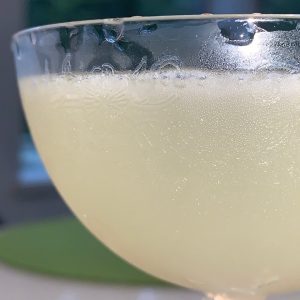
Vieux Mot
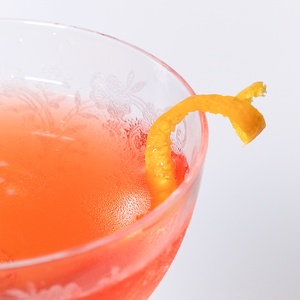
Fogerty

Floridita Cocktail
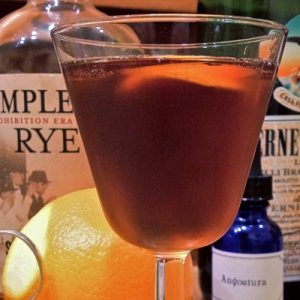
Toronto

Breakfast Collins

Drink with No Name: The Harrington

Margarita

Fangs Out
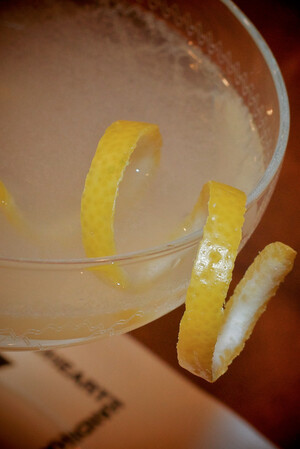
20th Century Cocktail

Cranston
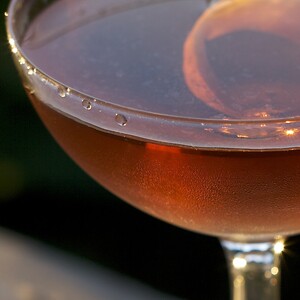
Bobby Burns
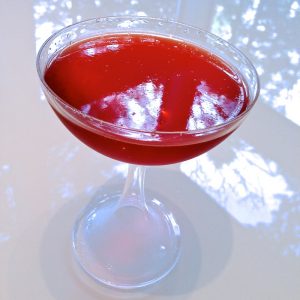
Eeyore’s Requiem
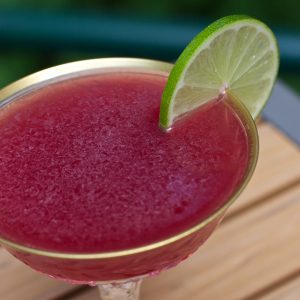
Sea of Cortez
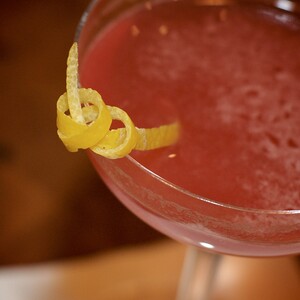
The Scofflaw
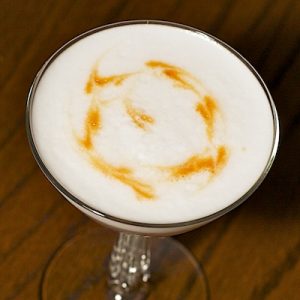
Iron Cross
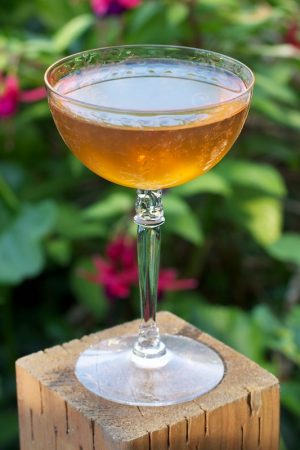
Bensonhurst
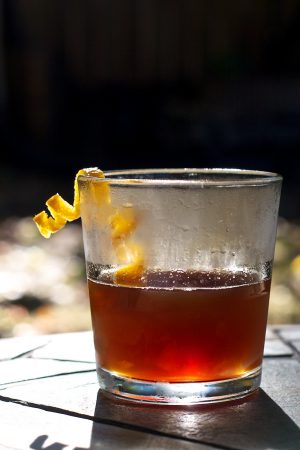
Bitter Branch

Corpse Reviver #2

Fernelderwood

Red Pepper Daisy
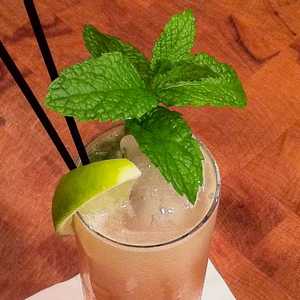
El Diablo
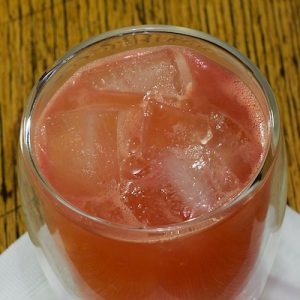
Saw Tooth

Amaretto Sour
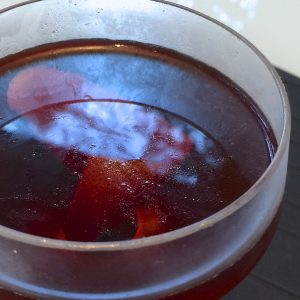
Palmetto

Basil Oil Garnish
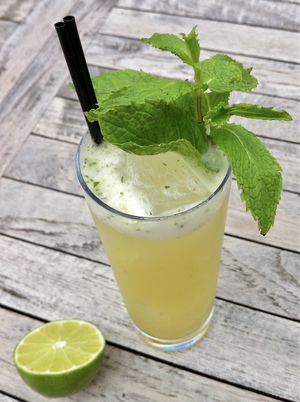
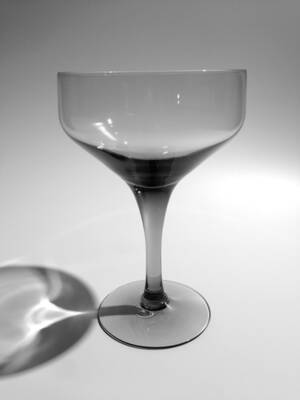


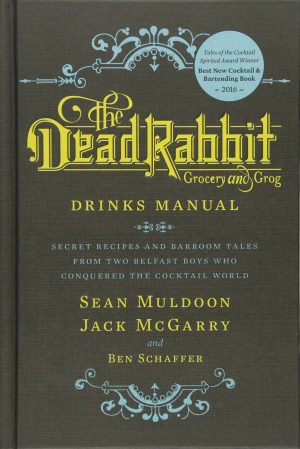

Dear Randy, I’m considering trying to make some cranberry liqueur. Cranberries grow quite abundantly here in Sweden. Would you choose a high proof vodka or a high proof rum ? What about the allspice ? Doesn’t that take away the cranberry from the cranberry or are we trying to imitate the cranberry sauce flavor? (Thanksgiving is not being celebrated here in Sweden at all by the way . Maybe the allspice compliments the cranberry flavor without takin over. I am sure either way you get a genuine product that is significantly your own, and it’s fun going through the process.… Read more »
Paul, I like your plan a lot. Rum could be better than what I used. There’s probably no reason to use allspice if you don’t want the additional flavor. As I mentioned in the post, I didn’t get much flavor out of that at all. You are probably smart to combine 2 cups of fruit. That’s more than I did and the more fresh fruit the better. If I recall, the hard part was not the fruit nor the alcohol, but the amount of simple syrup. If I made this again, I would do the tests again to get the… Read more »
I came upon some sour cherries this week and started a batch which I aim will be some sour cherry liquore. I used a little less than 2 cups of 190 proof vodka a cinnamon stick, 1/3 of an lemon’s peel, 10 allspice berries and I threw in about 20 crushed cherry kernels too. I have no idea how I will sweeten it later on, but I guess I will make the 2:1 syrup and try my way to a sweetness that suits my palate. I agree that you don’t want it too sweet so that the other flavors are… Read more »
Paul,
Experimentation will get you there for sure. You can do what I did with very small samples, or start with a minimum of syrup and taste it. Add more if needed.
I have made some fantastic sour cherry liqueur but the recipe I followed with an old farmer’s technique that was very imprecise: “fill a jar with an inch of fruit, then an inch of sugar, then an inch of fruit. . .” so I have no idea what the actual measurements were.
I am about to dillute the Cherry Liqueur …but I am also starting a batch of cranberry liqueur tomorrow and I wonder if you think it’s alright to use a little more than 12 oz of cranberries ? I picked about 20 oz. Do you think the cranberry flavor can become too prominent if I use 2 cups of rum ?
Paul
Can never have too much flavor! Go for it.
Dear Randy, I’m done with both the cherry and the cranberry liqueur now and they turned out great. I used 96% alcohol for the cherries and 70% white rum for the cranberries. Made a 2:1 simpel syrup and tried sampler my way to a good result. I agree with you that too much sugar often masks the genuine flavors of the fruit. For 1cl of extract I used 0,4cl of syrup. I have no idea what the percentage is but it tastes fine and the color is amazing. I suppose the fruit juices dillute the alcohol quite a bit. When… Read more »
Paul, I always love reading your comments!
50cl at 35%(70 proof) + 20cl at 0% = 70cl at 25%, so, 50 proof. I’d love to see pictures!
I got the concentrations mixed up. The rum was 70% ( 140 proof )
So the correct data would be 50cl at 70% (140 proof) + 20cl at 0% = 70cl at
????
50%
You can figure this out if you think in terms pure alcohol. Your 50cl of 70% is the same as 35cl of pure alcohol. You are diluting that up to 70cl. So, 50%.
Dear Randy,
I have infused black cherries in 140 proof rum which I plan to use when making cherry rum and coke this summer. I forgot about the infusion so it has been sitting from Aug 18 2017 to yesterday June 8th. It should still be okay considering the high proof, right?
Would you dillute it with water, or is it ok or even better to use a bit less when mixing it with Coke ? It shouldn’t be necessary to add any sugar as there is already a lot of sugar in the Coke right?
All the best,
Paul
Paul, it really depends on what you are trying to make. Taste it as-is. A cherry rum might be great without any change. However, if you are going for cherry liqueur, the alcohol is probably way too high. In that case I would dilute with simple syrup. Sugar will also enhance the cherry flavor.
I would take some one ounce samples or smaller and do some tests.